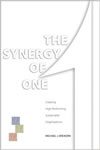All Articles
Accident Investigation & Reconstruction
Insurance
Anger Management & Related Issues
Land Mapping - Surveying - Zoning
Aviation
Logistics - Reverse Logistics
Business Consulting
Maintenance
Business Development
Manufacturing
Casinos - Gambling - Gaming
Marketing
Child Witch Phenomenon
Materials
Coins
Medical Practice Management
Communication
Metallurgy
Control Systems
Neuropsychology
Credit Damage
Pharmaceuticals
Crisis Management
Pharmacy & Pharmacology
Data Analytics and Visualization
Psychiatry
DNA (Deoxyribonucleic Acid)
Psychology
Economics
Radiology
Elder - Geriatrics
Real Estate
Electrical - Electrocution
Robots & Robotics
Enterprise Resource Planning (ERP)
Scuba Diving
Environment
Search Engine Optimization (SEO)
Ethics / Ethical Duties
Slip, Trip & Fall
Eyewitness Testimony
Social Issues
Forensic Psychiatry
Structured Settlements
Forensics
Travel & Leisure
Human Factors
Trial Presentations - Demonstrative Evidence
Human Resources
Yoga
More...

PAIN-MANAGEMENT-PAGE ARTICLES MAIN PAGE
. Contact Us if you are interested in having your work published on our website and linked to your Profile(s).
All Articles
Accounting
Internet Marketing
Amusement Parks
Islamic & Sharia Law
Business Development
Jails - Prisons - Correctional Facilities
Business Intelligence
Law Enforcement
Coins
Lubricants
Commercial Diving
Manufacturing
Communication
Market Research
Construction
Materials
Counseling
Medical - Medicine
Credit Damage
Medical Malpractice
Damages
Medical Records Review
Electrical - Electrocution
Multimedia
Emergency Medical Services (EMS)
Organic Chemistry
Employment
OSHA
Engineering
Pharmaceuticals
Equipment Leasing
Remote Sensing Image / Satellite Data Analysis
Expert Witnessing
Risk Management
Feng Shui
Securities
Food & Beverage
Speech-Language Pathology
Franchising
Telecommunication
Fuel Systems
Telemedicine - Remote / Virtual Medicine
Geology
Toxicogenomics
Hotels & Hospitality
Vocational Rehabilitation And Counseling
Injury
Waterproofing
International Trade
Yoga
More...
Featured Articles
There are no active articles here at this time. Please use the search bar, try another category, or contact us if you would like to contribute an article.
This Article is unavailable. Contact Us
Search articles by title, description, author etc.
Sort Featured Articles
Featured resources
Fuel and Fuel System Microbiology:...
by Frederick J. Passman, PhD
The Synergy of One: Creating...
by Michael J. Dreikorn
The Official Universal Workout Book
by Frank Smith & Chuck Coker
Follow us










